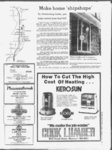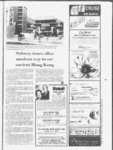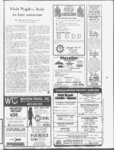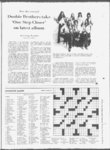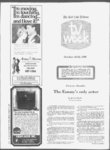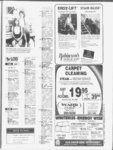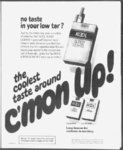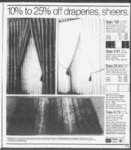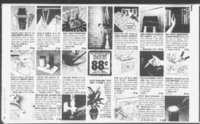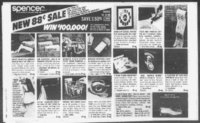| OCR Text |
Show siMte. I Crewman removes paint from 727 to cut pounds and make fuel go farther. Result a lightweight, aluminum look like plane in top photo, at left. discovered that less weight means savings on fuel During the last year, airline fuel costs soared 80 percent, taking a big bite out of corporate profits This year, for example, TWA alone will spend SI 2 billion on fuel As part of their efforts, developed "Operation Skinny," a program designed to trim fuel bills loads. For exby lightening of instead ample, putting three copies of their magazine into each seat poc ket on their aircraft, only one copy will be issued (er seat Because fewer magazines mean less weight, TWA expects to save S 543,000 annually on fuel Even the slightest weight difter-enes c an save a great deal of money New carpeting installed on 15 TWA 747s weighs just 13 2 ounces less per cost-cuttin- g 1WA We still need Another solution is to use renewable resources. The electric industry is involved in intense research on many of these possibilities-geotherm- al, solar, wind, water, biomass, nuclear salt fusion, ponds, tides, you name it. But it is a to be long time before any of these results going in reliable, large scale electric generation. So what do we do in the meantime? How the fuel cell works. Fuel cells derive their energy from an electrochemical reaction of hydrogen combining with oxygen to form water (H,0) A conventional fuel is converted into hydrogen gas which is then split into hydrogen ions and electrons at an anode ( -- ). The ions move through an electrolyte, while the electrons move through an external circuit, both drawn towards a cathode ( ). At the cathode, the hydrogen, electrons and oxygen (from the air) combine to form water The flow of electrons through the external circuit from anode to cathode is eiectncity A fuel cell piant is now be.ng built in New York City by the Consolidated Edison Company and its several partners. This test protect is also funded by hundreds of electric companies through their ipembership in the Electric Power Research Institute (EPRI), as well as by the government and pnvate industry to build coal and nuclear plants now. While we are conserving and working on new energy sources for the future, we need to build the generating plants we know we can rely on, coal and nuclear. And they must be safe and efficient. Because it takes from 8 to 14 years to build and license a plant, we need to begin plan, now. Otherwise we may end up without enough electricity before the new technologies are ready to move in. For more information about the electric industry's consenation and research efforts and the pressing need to build power plants now, write to the Edison Electric Institute, Dept. B- Ml 19th Sf. N.W., . - Washington, D.C. 20036 Edison Electric Institute The association of electric companies d c square yard Yet the annual savings in tuel is expected to reach $100,000. Other c arriers are also seeking ways to trim down, like reduc ing the quantity ot water carried for drinking and lavatory tac ihties Lightweight seats recently installed on American's 747s will save $1 million annually And astern's 240 jet tleet will boast a buffered aluminum Icxrk to knoc k off the 125 450 (rounds ot paint it takes to over a conventional airplane Fro-eted annual savings on fuel a hefty I c $2 c 5 million f |







































































































